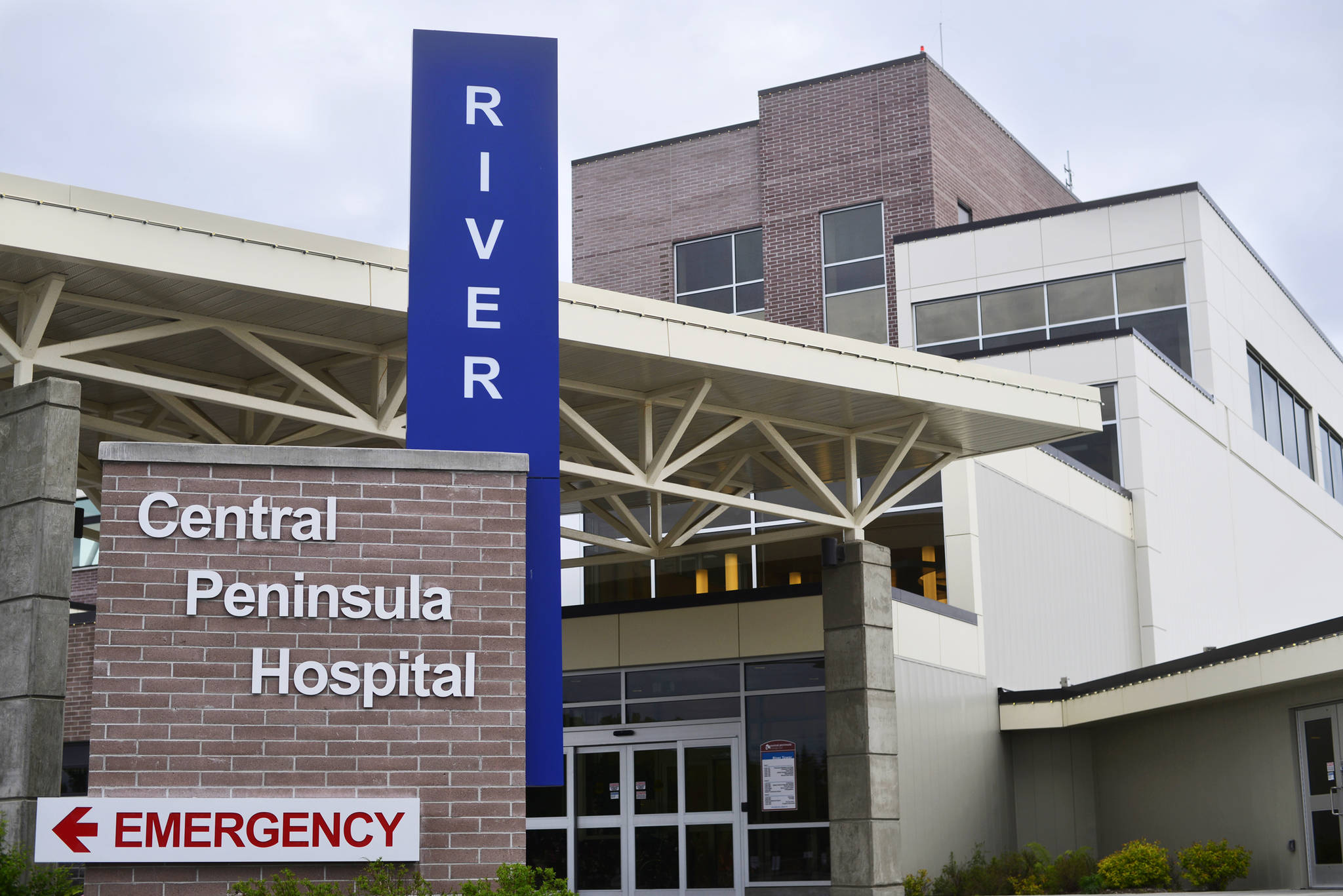Babies born on the central Kenai Peninsula soon after November 2019 may be the first to enter the world in a new birth center that Central Peninsula Hospital (CPH) plans to have operational by that date. The enlarged obstetrics unit will be on the second floor of a new hospital addition and a new facility for heart treatments will sit beneath it.
Construction on the addition — the sixth phase of an expansion plan the hospital began in 2003 — started with a groundbreaking ceremony on Friday.
The $32 million expansion is funded with hospital savings and $26.9 million in Kenai Peninsula Borough revenue bonds. CPH plans to pay the bonds with its revenue without requiring tax dollars from the Kenai Peninsula Borough, according to the certificate of need application it filed with the Alaska Department of Health and Social Services in June 2017. It received the certificate in November of that year.
Cardiac catheterization
Though the birth center — along with a larger pharmacy and additional intensive care unit beds that the new wing will also contain — expands services the hospital already provides, one completely new service will be based in addition: cardiac catheterization, a technique of probing the heart with small tubes to find or clear blockages that might lead to a heart attack or other cardiac trouble.
There are no other clinics offering cardiac catheterization on the Kenai Peninsula, and patients needing to be diagnosed or treated with the technique have to drive to Anchorage — or in emergency cases be flown.
Heart disease alternates with cancer as the Kenai Peninsula’s leadings causes of death, according to the Alaska Department of Health and Socials Services, and nationwide is the leading cause of death for people older than 65 — an increasing age demographic on the Kenai Peninsula.
CPH Imaging Director Katherine Leslie, who will also lead the catheterization lab when it’s complete, said patient transport to Anchorage for cardiac issues is an almost daily occurrence. Other new services in the catheterization lab, such as interventional radiology, could eliminate a drive to Anchorage for many others.
“There’s probably two or three patients a day we do diagnostic testing on in (the Imaging Department) that we could do an interventional procedure on, as opposed to having them go up to Anchorage, so again people could stay home and get the care and services they need right here,” Leslie said. “It’s pretty exciting for us to think about.”
The new lab will be staffed with cardiologists from the Anchorage-based Alaska Heart Institute, which presently provides provides cardiologists to CPH for other work.
Obstetrics unit
CPH’s present birth center is in the oldest area of the hospital — a wood-framed, ground-floor structure built in the early 1980s, which doesn’t meet present security requirements.
“The (obstetrics) department has not seen any measurable modernization for decades and is in grave need of upgrade,” CPH’s certificate of need application states. “More importantly the ability to increase infant security is paramount as it currently places the hospital in an untenable liability position.”
In 2013 the Joint Commission, a nonprofit health care accreditation group, found that CPH’s birth center failed its security standards because it was accessible to the public, and recommended that CPH assess “how the OB (obstetrics) unit could be locked down in its entirety.” After the finding CPH added security doors with badge access, but because the inside route to the hospital’s specialty clinics building is through the obstetrics unit, patients either had to be escorted by hospital staff through the secured area or go outside to get there — which resulted in one patient falling on ice and breaking a hip, according to CPH’s certificate of need application.
The new obstetrics wing — on the hospital’s second floor and connected to a new interior corridor providing access throughout the building — will have nine beds, the same number as the present birth center. The rooms around those beds will be larger and have features including fold-out beds for the partners of new mothers spending the night. Some will have birthing tubs for water births — a feature present in some existing obstetrics rooms, though they’re now located in the bathroom.
“The idea behind the OB (obstetrics room) was to provide many types of possible experiences for birth,” said architect Brad Dehle of the Oregon-based Hue Architecture, who worked on the expansion. “It was to offer multiple choices for being able to deal with each family’s preference.”
The new birth center will be next door to the hospital’s existing surgery center, allowing some of the beds to be shared between them as needed.
“This innovation, coupled with the expansion of (the intensive care unit), will stave off the need to add on to the (surgical) wing for at least a decade,” CPH’s certificate of need application states. “In addition, the (obstetrics) department will be more efficient (and) allow clinical staff to flex between obstetrics and surgery.”
Reach Ben Boettger at bboettger@peninsulaclarion.com

